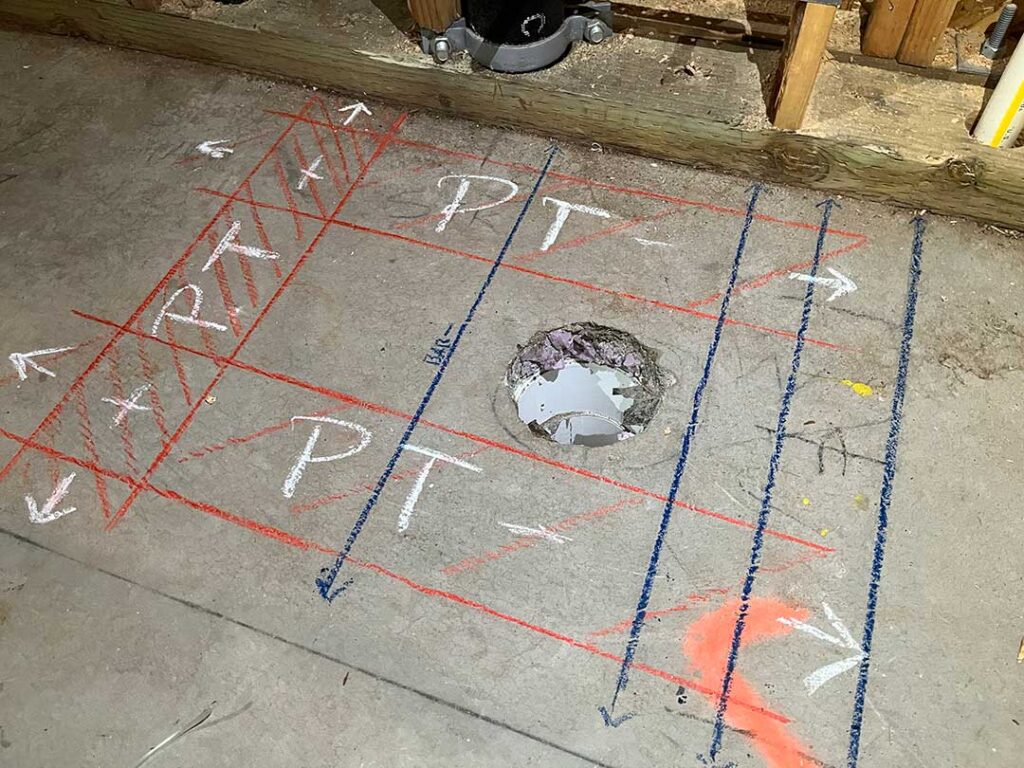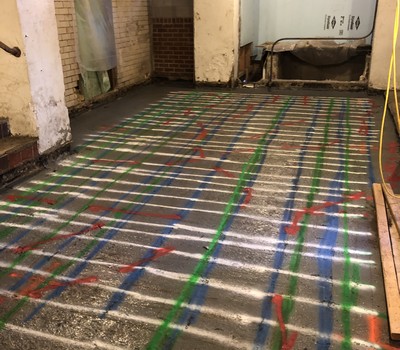Specialist Tips for Optimal Concrete Scanning Outcomes
Specialist Tips for Optimal Concrete Scanning Outcomes
Blog Article
Unveil the Transformative Power of Concrete Scanning in Optimizing Performance and Safety
Concrete scanning has become a critical device in the building and construction industry, supplying exceptional advantages in enhancing task efficiency and making certain security standards. By utilizing innovative modern technology, concrete scanning enables experts to see beyond the surface area, revealing covert complexities that could impact the structural stability of a structure. The transformative power of concrete scanning depends on its capability to give real-time information and comprehensive understandings, revolutionizing exactly how tasks are prepared and performed. As we dig into the ins and outs of this innovative strategy, a world of opportunities opens, showcasing a brand-new era of construction techniques that focus on accuracy and safety and security.
Value of Concrete Scanning
Making certain the structural integrity and safety and security of building tasks starts with the essential action of carrying out complete concrete scanning. Concrete scanning is a non-destructive technique utilized to identify and map subsurface aspects within concrete frameworks.
The importance of concrete scanning can not be overstated, as it plays an important role in stopping crashes, decreasing job hold-ups, and making sure the long-term sturdiness of the construction. By identifying prospective hazards before the building phase begins, home builders can apply appropriate precaution and make educated decisions regarding the design and execution of the project. Furthermore, concrete scanning helps in optimizing job timelines and spending plan by preventing unexpected costs and delays that might arise because of unexpected blockages within the concrete. Inevitably, investing in thorough concrete scanning is a proactive technique that enhances both performance and safety in building and construction jobs.
Exactly How Concrete Scanning Works
Concrete scanning operates as a vital tool in building and construction projects by utilizing innovative modern technologies to find and map subsurface aspects without creating architectural damage. Ground Penetrating Radar (GPR) and Electromagnetic Induction (EMI) are 2 primary approaches made use of in concrete scanning.
Throughout the scanning procedure, the information gathered is assessed in real-time, enabling prompt recognition of possible hazards or barriers beneath the surface area. By using these advanced technologies, concrete scanning considerably lowers the threat of costly problems and injuries on building websites.
Advantages of Concrete Scanning
Utilizing advanced scanning modern technologies in building tasks provides a multitude of advantages, improving both efficiency and safety and security on-site. Among the primary benefits of concrete scanning is the capability to find and locate ingrained objects such as rebar, post-tension cable televisions, and channels accurately. By identifying these elements before boring or reducing into concrete frameworks, the risk of unexpected strikes is substantially lowered, stopping possible injuries to employees and damages to the structure itself. Concrete scanning assists in preparation and designing extra successfully, as it provides accurate details regarding the location and depth of architectural components.

Study: Concrete Scanning Success

In another instance, a construction company used 3D concrete scanning to evaluate the problem of aging concrete structures in a historical building. The useful site thorough scans supplied important insights into the degree of deterioration and helped prioritize maintenance initiatives effectively. By proactively addressing areas of problem identified through scanning, the company was able to extend the life-span of the structure and ensure passenger security.
These study emphasize the transformative power of concrete scanning in enhancing efficiency, precision, and security in building jobs.
Applying Concrete Scanning in Projects
Carrying out sophisticated scanning innovations throughout building and construction jobs has become increasingly important for enhancing accuracy and safety. By incorporating concrete scanning into job planning and implementation, building teams can determine potential hazards, such as rebar or post-tension cords, hidden within concrete frameworks. This proactive approach reduces the risk of accidents, hold-ups, and pricey rework, inevitably leading to more efficient project timelines and budget plans.
To implement concrete scanning successfully, job managers need to team up closely with skilled scanning specialists to determine one of the most suitable scanning strategies for the certain project requirements. Engaging scanning professionals from the onset of a task allows the team to develop thorough scanning plans that resolve essential locations of problem and ensure thorough information collection.
In addition, incorporating concrete scanning into normal job operations can streamline decision-making procedures, as real-time scan data gives instant insights into the problem of concrete frameworks - Concrete Scanning. This data-driven strategy promotes informed problem-solving and allows groups to make modifications quickly, cultivating a society of effectiveness and safety and security throughout the task lifecycle

Final Thought
To conclude, concrete scanning plays an essential role in enhancing effectiveness and safety in building and construction tasks. By utilizing advanced modern technology to map and detect out underlying frameworks within concrete, this procedure assists to avoid expensive errors, ensure architectural honesty, and minimize dangers on site. With the capability try these out to reveal concealed components and give exact data, concrete scanning verifies to be a beneficial device for optimizing task outcomes and maximizing general success.
Concrete scanning is a non-destructive approach utilized to discover and map subsurface components within concrete structures. Additionally, concrete scanning helps in maximizing project timelines and budget plan by staying clear of unanticipated expenses and hold-ups that may occur due to unforeseen obstructions within the concrete. One remarkable situation research involves a massive restoration job where concrete scanning played a critical function in making certain job success.In one more situation, a building firm used 3D concrete scanning to evaluate the problem of aging concrete structures in a historic building. By integrating concrete scanning into task planning and execution, building and construction groups can determine potential risks, such as rebar or post-tension cables, concealed within concrete frameworks.
Report this page